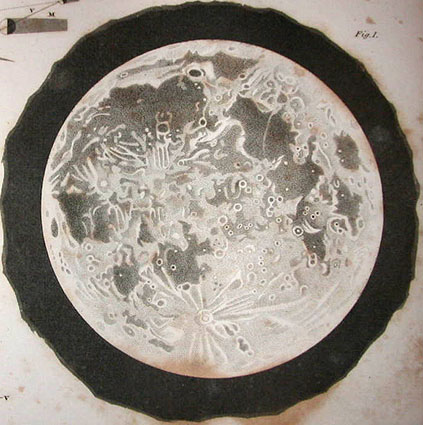1826 Moon

Explanation:
I did it again. I bought another lunar map on eBay. This one was
printed in London in 1826 and apparently was from an encyclopedia or some similar
work. I hate it when books are disassembled to sell the plates - but I love the old
lunar maps! The left side of the engraving contains illustrations of lunar shadows,
phases and eclipses but the glory of the plate is the large full Moon drawing, shown
here. In general, almost every lunar map made in the 1700s and early 1800s was a
copy of one of the few original telescope-based drawing made by Hevelius or Grimaldi.
But this particular drawing seems to be based on the 1805 engraving of the full Moon
by the British artist John Russell (see Whitaker's Mapping and Naming of the Moon,
p 99). Russell's map had more details, and the copier mimicked the general patterns
but simplified. In fact, the simplification went so far that Copernicus has disappeared
from the copy, even though it is clearly shown by Russell. It is ironic that this
is a degraded copy of Russell's map, because Russell was inspired to make his very
accurate map because of the very poor quality maps commonly reproduced in books!
